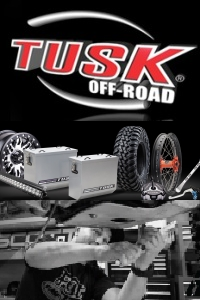The 3 Reasons You’re Slower Than You Used to Be
The onset of change need not be feared, because we have ways to battle it every step of the way.
Our bodies work the same way when we’re older as they do when we’re younger. Our organs, for example, still function the same way that they did when we were younger. But within this apparent sameness, our bodies do experience change. Skin loses elasticity, and hair loses pigment and begins to thin. And while these kinds of changes can be damaging to the ego, they do not threaten our health.
The same can’t be said of other, less obvious changes that we experience to our muscle mass and strength, our bone health, and our balance. Changes in these three areas can impact our health–and our sports performance.
1. Muscle Mass and Strength
In our mid- to late 20s, our muscle mass, strength, and functionality generally peak, because up to that point our bodies are programmed to release hormones that cause continual growth of muscle. As we enter our 30s, however, our bodies exit this programmed growth phase and we begin to run the risk of losing muscle mass and strength in a process called sarcopenia. From that point onward, we can lose as much as 3 to 8 percent of our muscle mass—or up to seven pounds of muscle—every decade.
Many people aren’t even aware that this loss is happening. That’s because we need only a small fraction of our actual strength, 30 percent or so, to get through a typical day. Unless you’ve been doing something much more taxing, such as lifting weights, playing a sport at the elite level, or working in a very strenuous job, a 5 percent loss of strength wouldn’t be immediately obvious because you’d still be able to easily climb stairs, wash your car, or move a box of clothes. But once this loss gets to 50 percent, the effects become much more apparent. Suddenly, tasks that once seemed easy, such as getting up from a couch, feel much harder.
Once this degeneration process begins, it only gets worse if left unchecked. The natural tendency at that point might be to avoid doing those things that feel difficult. But responding with a decrease in physical activity will only lead to further loss of muscle and a corresponding decrease in physical energy and stamina, as our aerobic capacity diminishes along with our strength. To this, add a tendency to gain weight and an overall decrease in health.
The effect of strength on overall health might not be immediately obvious. Muscle mass burns calories, so a decline in muscle tissue will cause a decrease in metabolic activity. This means that the body will burn fewer calories, which can affect insulin sensitivity and hormone levels. This in turn can lead to obesity, diabetes, and cardiovascular disease.
By our 60s and 70s, this loss of muscle mass and strength will have led to increased frailty and risk of falling, as well as decreased independence.
While we can’t stop the age clock, we absolutely can change the way in which we age. Since muscle tissue can be regenerated at any age, we can use strength training to slow down the effects of aging and in some cases, even reverse them.
2. Bone Density
The 206 bones that make up our skeletons provide structure, protection, and support for our bodies, and make movement possible. Despite appearing solid, however, our bones are actually a matrix of protein and minerals, comprised of living tissue that is constantly changing in a process known as remodeling. Specialized cells called osteoclasts break down older bone for reabsorption while other cells called osteoblasts bring protein and minerals—mostly calcium and phosphate—into the bone matrix for sculpting and repair.
During the arc of our lives, much of the cartilage that we’re born with hardens into bone, small bones fuse, and all bones enlarge as we grow into adulthood. Nutrition and lifestyle, among other factors, help determine bone volume and density.
As with all living tissue, bone is susceptible to disease, as well as to disorders linked to insufficient density. One common ailment is osteoporosis, which is a reduction in bone mineral density that raises the risk of fracture. Postmenopausal women in particular are at risk for this disease, although it can strike men and premenopausal women as well.
Aging brings other challenges as well. Lubricating fluid in the joints may decrease, and cartilage may lose water content and become more susceptible to stress, especially in the hips and knees. This can lead to joint stiffness, loss of flexibility, and inflammation and arthritis. Vertebrae may compress, compromising posture and further limiting mobility. Over time, these changes can trigger a downward spiral in health.
But, once again, strength training can come to the rescue by reducing, delaying, and sometimes even reversing these outcomes. This is because strength training can add density and mineral content to aging bone. It performs these miracles in a very straightforward way: by stressing the body and relying on the body’s adaptive response. Just as with muscle, bones respond to resistance by getting tougher and stronger.
3. Balance
Our mastery of balance is due to three things: our vestibular system, our proprioceptive system, and our sight.
- The vestibular system is in the inner ear. It’s a complex structure made up of chambers and tubes filled with fluid. Specialized nerves inside these structures gather information about the position of the body in relation to the pull of gravity.
- The proprioceptive system uses nerve receptors in the skeletal muscles to gather information about the position of your body in space—everything from where your arms are to the position of your hips and the tilt of your head.
- Finally, your sight also contributes to your balance. Your depth perception, night vision, and sense of contrast will all be used by your brain, in conjunction with information from your vestibular system, to create a map of his surroundings in relation to your body’s position.
Your brain will process all of this data nearly instantaneously to determine the position of your body, and then it will use its neural network to engage the muscles that you need to maintain his balance. As you move, your brain will use the ongoing real-time data feed to constantly update your muscle contractions in order to maintain your balance.
It’s an amazing system, a true marvel of evolution. The precise way in which your brain uses your muscles to maintain balance is no less impressive.
The muscles that you engage in balance are your core muscles. These are found in your trunk, from mid-thigh to rib cage, on your front, back, and sides. They include hips, abdominals, and backside muscles. Regarding balance, though, the undisputed champion of all these is the transverse abdominis.
The transverse abdominis is the deepest layer of muscle tissue in our midsection. It wraps around our bodies like a girdle. Whenever we move, the transverse abdominis clenches, holding our bodies in place as we move our arms and legs. It provides the anchor for our movement, giving us leverage to move without falling over.
Eventually, though, we all become unsteady. That’s because loss of balance is one of the key challenges that we face as we age. This is caused by degeneration of each of these systems: our visual acuity, our strength and the ability to use our strength effectively to control the position of our bodies in space, and the function of our inner ear.
As we age, these systems start to become compromised. Our sight, the ability to focus and see things clearly, diminishes with age. So do depth perception, night vision, and sensitivity to contrast. Eye problems can also impair, blur, or distort vision. The loss of these visual faculties compromises balance. The number of nerve cells in the vestibular system and blood flow to the inner ear also decrease after about age 55.
The loss of muscle strength is perhaps the most problematic. Most at risk are the fast-twitch muscle fibers, which provide explosive strength on demand, instantly. We rely on these muscles for quick adjustments in balance. When they’re diminished, we’re unable to catch ourselves easily when we stumble. When we were younger, we were able to use the muscle we had to adequately keep our balance, even if we were generally out of shape, but as we get older and lose muscle mass, we no longer have that luxury. Combined with diminished reflexes and coordination, we’re increasingly likely to fall.
The onset of change need not be feared, because we have ways to battle it every step of the way. For this reason, we won’t call these changes threats, which implies potential helplessness. Instead, we’ll call them challenges, because we possess the ability to meet these problems head on and deal with them.










 mx43
mx43